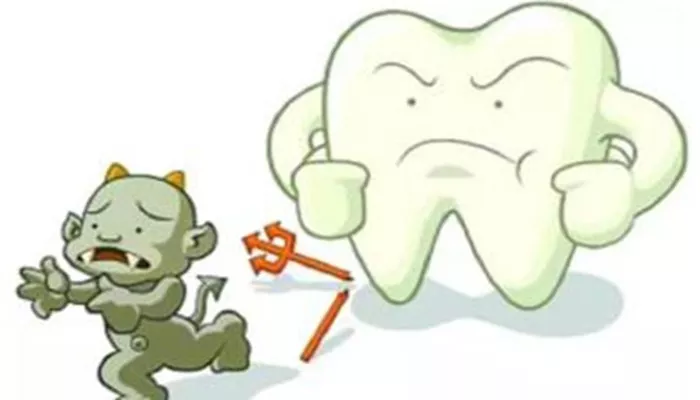Tooth decay, also known as dental caries or cavities, is a common oral health issue that affects people of all ages. Many people wonder about the nature of tooth decay and whether it can be transmitted from one person to another. In this article, we will explore the concept of tooth decay, its causes, and whether it can be considered contagious.
Understanding Tooth Decay
Tooth decay occurs when the hard surfaces of the teeth are damaged by acids produced by bacteria in the mouth. These bacteria feed on sugars from food and drinks, producing acids that erode the enamel, the protective outer layer of the teeth. If not treated, tooth decay can progress, leading to cavities, pain, and even tooth loss.
How Tooth Decay Develops
Plaque Formation: When you eat, food particles and bacteria combine to form a sticky film called plaque on your teeth.
Acid Production: The bacteria in plaque metabolize sugars and produce acids as a byproduct.
Enamel Erosion: The acids attack the enamel, causing it to weaken and eventually create cavities.
Progression of Decay: If the decay continues untreated, it can reach deeper layers of the tooth, including the dentin and pulp.
The Contagious Nature of Tooth Decay
While tooth decay itself is not contagious in the traditional sense, certain factors related to its development can be transmitted between individuals. Understanding these factors can help clarify the connection between tooth decay and contagion.
1. Bacteria Transmission
The primary bacteria responsible for tooth decay are Streptococcus mutans and Lactobacillus species. These bacteria can be transferred from one person to another, particularly through saliva. For instance:
Kissing: When you kiss someone, saliva is exchanged, and bacteria can be transferred.
Sharing Utensils: Using the same spoon, fork, or cup can also facilitate the transfer of bacteria.
Mother to Child Transmission: It is common for mothers to pass these bacteria to their children, especially during early childhood. This is often referred to as “vertical transmission.”
2. The Role of Diet and Oral Hygiene
While the bacteria can be transmitted, the development of tooth decay depends on several factors, including diet and oral hygiene practices. If a person has poor oral hygiene or a diet high in sugars, they are more likely to develop cavities, regardless of the bacteria present in their mouth.
Diet: A diet rich in sugars and carbohydrates can promote the growth of decay-causing bacteria. If one person has a high-sugar diet and shares food with another, they may indirectly influence that person’s risk of developing cavities.
Oral Hygiene: Good oral hygiene practices, such as regular brushing and flossing, can help control the bacteria in the mouth. If one person maintains excellent oral hygiene and another does not, the latter may be at higher risk of developing tooth decay.
3. Risk Factors for Tooth Decay
Several factors can increase the risk of tooth decay, including:
Age: Children and older adults are more susceptible to cavities.
Saliva Production: Saliva helps neutralize acids and wash away food particles. Reduced saliva production (xerostomia) increases the risk of decay.
Fluoride Exposure: Fluoride strengthens enamel and helps prevent cavities. Lack of fluoride can increase decay risk.
Medical Conditions: Certain health issues, such as diabetes or eating disorders, can increase the risk of tooth decay.
Preventing Tooth Decay
While tooth decay can involve the transmission of bacteria, there are effective strategies to prevent it. Here are some tips to maintain good oral health and reduce the risk of cavities:
1. Maintain Good Oral Hygiene
Brush Twice a Day: Use fluoride toothpaste and brush for at least two minutes each time.
Floss Daily: Flossing removes plaque and food particles from between the teeth.
2. Regular Dental Visits
Visit your dentist regularly for check-ups and cleanings. Professional cleanings can remove tartar that brushing cannot, and your dentist can detect early signs of decay.
3. Healthy Diet
Limit sugary snacks and beverages. Focus on a balanced diet that includes fruits, vegetables, whole grains, and lean proteins. Foods rich in calcium and phosphorus, such as dairy products, can help strengthen teeth.
4. Use Fluoride
Fluoride helps remineralize enamel and can reverse early signs of tooth decay. Use fluoride toothpaste and consider fluoride treatments from your dentist.
5. Sealants
Dental sealants are protective coatings applied to the chewing surfaces of the back teeth. They can prevent cavities by sealing out food particles and bacteria.
6. Educate Family Members
Educate family members, especially children, about the importance of oral hygiene. Encourage them to brush and floss regularly and to make healthy food choices.
Conclusion
Tooth decay is not contagious in the traditional sense, but the bacteria that cause it can be transmitted from one person to another. Factors such as diet and oral hygiene play a significant role in the development of cavities. By maintaining good oral hygiene, visiting the dentist regularly, and making healthy dietary choices, individuals can significantly reduce their risk of tooth decay.
Related topics:

